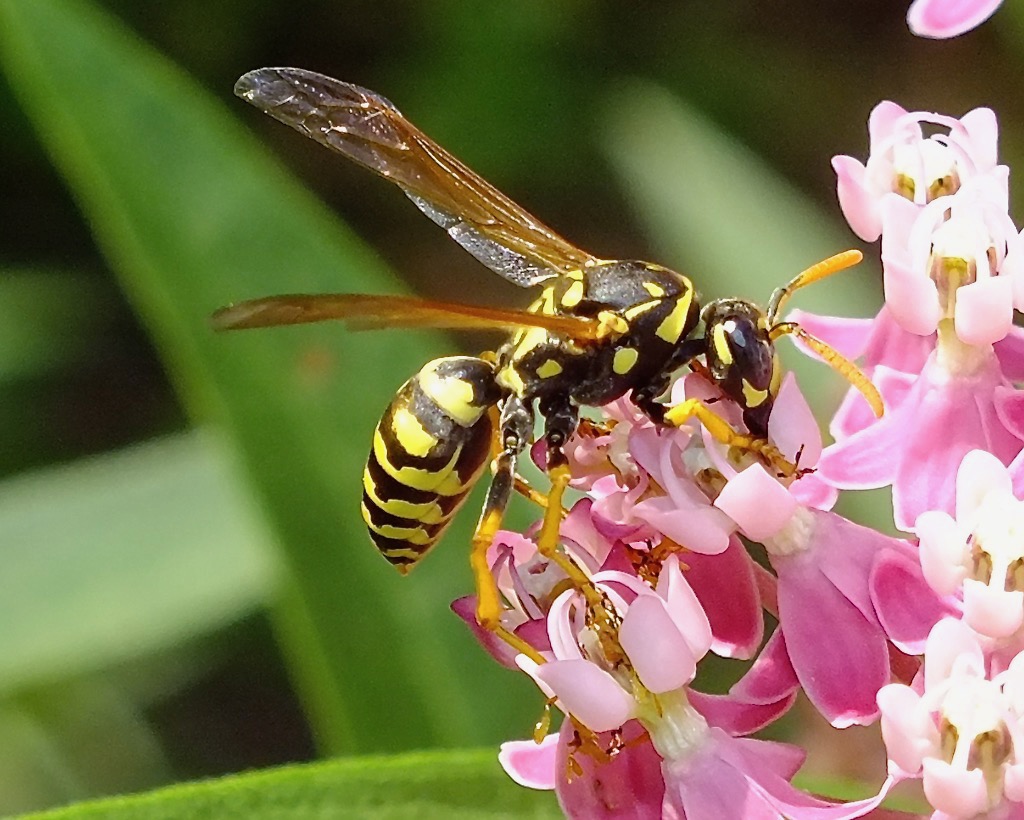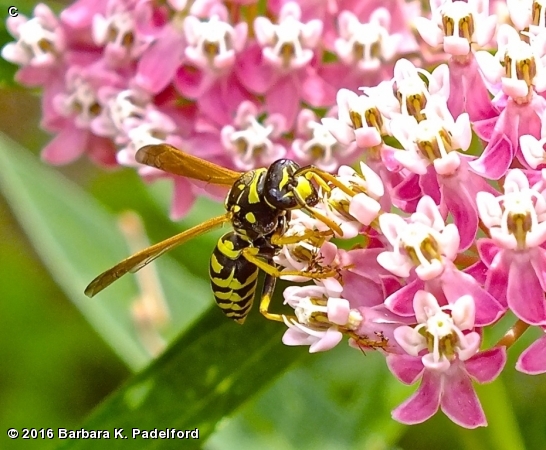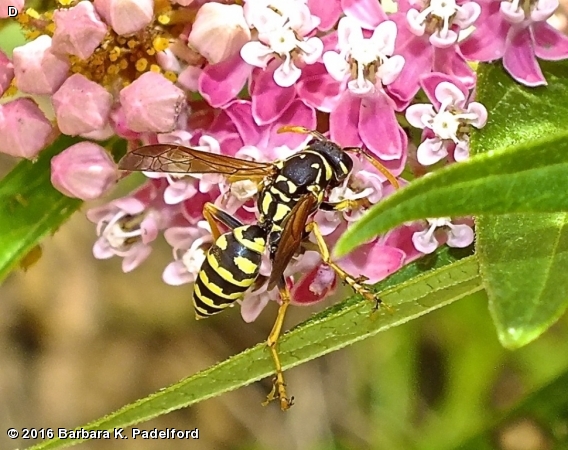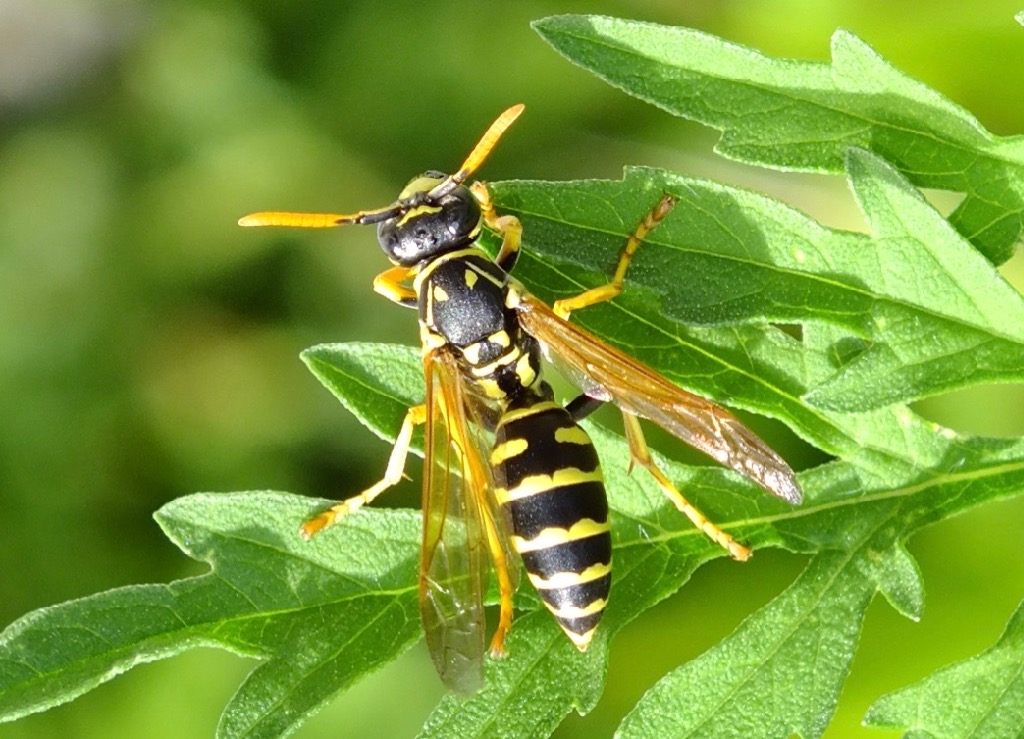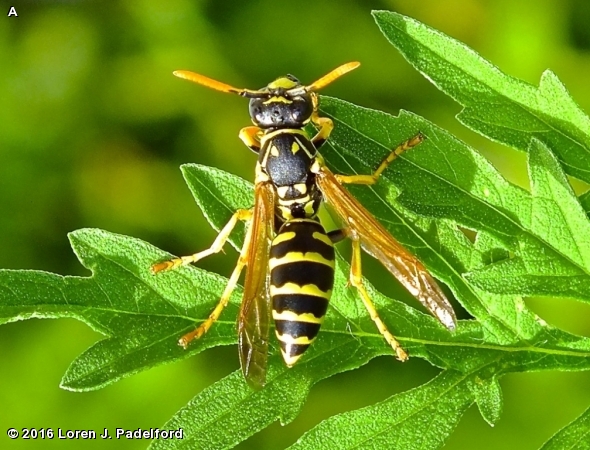
The European Paper Wasp is a colorful black and yellow wasp about 3/4” in length. It has clear orange-tinted wings and bright, orange antennae. It is often mistaken for a Yellow Jacket, but no other species of Vespidae has orange antennae.
This wasp was first photographed at Fontenelle Forest Nature Center on July 7, 2016. It was found again in the pollinator garden at the Wetlands Center on August 4, 2016. This wasp occurs throughout Eurasia and continues to expand in North America. It was first reported in the U.S. in 1978 near Boston, Mass.
The larvae are fed chewed-up pieces of caterpillars and other insects caught by adults. The adults feed on nectar from flowers. Only fertilized queens from the previous year overwinter and begin new colonies each spring. A very successful colonizer, this invasive wasp has rapidly increased its distribution across the northern U.S., and has been reported to be replacing native species of wasps in some areas. They nest earlier than the native wasps and therefore have more workers to forage for food than the later nesting native wasps. They have a more generalist diet than other Polistes wasps which eat only caterpillars. Some entomologists are concerned that the large numbers of P. dominula will adversely affect the species of desirable insects such as butterflies.
The content of NatureSearch is provided by dedicated volunteer Naturalists of Fontenelle Forest who strive to provide the most accurate information available. Contributors of the images retain their copyrights. The point of contact for this page is: Babs Padelford.

